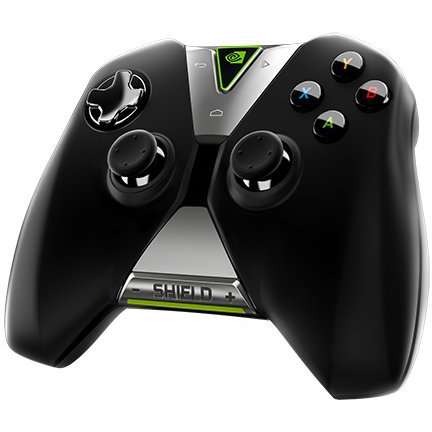Nvidia Shield Tablet And Shield Controller Review
The Shield Tablet, powered by Nvidia’s Tegra K1 SoC, deftly handles browsing and media playback duties. Combining it with the wireless Shield Controller transforms the 8-inch device into an exciting mobile gaming platform.
Availability, Options And Accessories
Availability And Options
The Shield Tablet comes in two different configurations: a Wi-Fi only model with 16GB of internal storage for $299 and a Wi-Fi + LTE variant with 32GB of storage for $399. This is the first consumer product that Nvidia is launching worldwide (the Shield Portable and Tegra Note 7 were available in the U.S.-only), and it's currently available from a number of retail outlets in the U.S., Canada and Europe. Additional regions will be added this fall.
The version that comes with a cellular modem supports LTE bands 2, 4, 5, 7, 17 (1900, 1700, 850, 2600, 700) and HSPA+ bands 1, 2, 4, 5 (2100, 1900, 1700, 850) in North America. It comes unlocked and is compatible with AT&T and T-Mobile networks. For those living outside North America, it supports LTE bands 1, 3, 7, 20 (2100, 1800, 2600, 800) and HSPA+ bands 1, 2, 5, 8 (2100, 1900, 850, 900).
Nvidia also offers a cover to protect the Shield Tablet’s screen for $39. It attaches to the side of the tablet with strong magnets and works like Apple’s Smart Cover, turning the screen on or off when it's opened or closed. The flexible cover folds back and also doubles as a stand for holding the tablet upright in landscape mode. There are three sets of magnets inside the back cover; the lower and middle sets allow the cover to prop up the tablet at two different angles. The set near the top holds the cover flat against the back so it doesn’t get in the way when it isn’t needed. The surface of the cover that contacts the screen is a soft felt material, while the exterior has a padded, vinyl-like texture.
The other complimentary hardware (or necessity, if you want the full gaming experience) that Nvidia offers is its Shield Controller, available for $59. This wireless controller uses Wi-Fi Direct instead of Bluetooth for communication, which keeps control latency to a minimum. It allows sufficient bandwidth for transmitting bi-directional 16-bit audio (32kHz upstream and 16kHz downstream to the Shield Tablet), which you'll want when a headset and mic are plugged into the controller's headphone jack. Up to four Shield Controllers can be paired with the tablet at one time.
Accessories
The Shield Tablet includes the stylus and also comes with a wall charger and USB cable.
Correction: This article was updated at 1:55 pm ET to clear up confusion regarding the HDMI cable listed among the accessories. Only the press kits come with an HDMI cable — the retail boxes do not include one.
Get Tom's Hardware's best news and in-depth reviews, straight to your inbox.
Current page: Availability, Options And Accessories
Prev Page The Nvidia Shield Tablet And Controller: Defending Against Boredom Next Page Shield Tablet: Look And Feel-
blubbey Those GPGPU benchmarks are ridiculous in comparison. It looks like a great bit of kit from what I've seen so far. A die shrunk Maxwell should be fantastic. Maybe even a lower clocked version just for power consumption? It'll still perform as well, if not better than the K1 at 750MHz (assuming 2 SMMs) I'd assume.Reply -
Memnarchon "Based on these results, Tegra K1 must be “a neural net processor; a learning computer” sent back through time to destroy all of the other SoCs that could lead a rebellion in the post-apocalyptic future."Reply
Lol this is epic! xD
Anyway, great and unique review. Especially for the so many GPGPU benchmarks.
Nvidia tablet at $299 seems to be a great buy. -
aberkae If maxwell brings double the performance per watt on the same node the next tegra chip on 20 nm node should be a home run for the companyReply -
deftonian Impressive, but I feel it's still missing that "umph" to get me to buy this and carry it around as an added device, next to my phone (Note 3). Maybe I just don't game enough on the android market or steam. Either way, I think it is impressive for a mobile gaming device and all the things it offers. I think they've started a great line and hope it grows into a successful tablet/gaming brand.Reply -
aberkae If maxwell brings double the performance per watt on the same node the next tegra chip on 20 nm node should be a home run for the companyReply -
gio2vanni86 The streaming a game while i'm at my friends house using my PC at home is what has me very interested. Plug into his TV and play amazing games he can only dream of. I'm in.Reply -
vithrell Just wait for Intel's Core M. It wont match the price (CPU alone will cost $300), but in fanless tablet form factor it wont have worthy competitor. Early GPU benchmarks give Core M 55k graphics score in Ice Storm, so more than 1.5x more power than Tegra K1. AND you can run full Windows on it. I wish Nvidia took x86 path with its cpu cores.Reply




